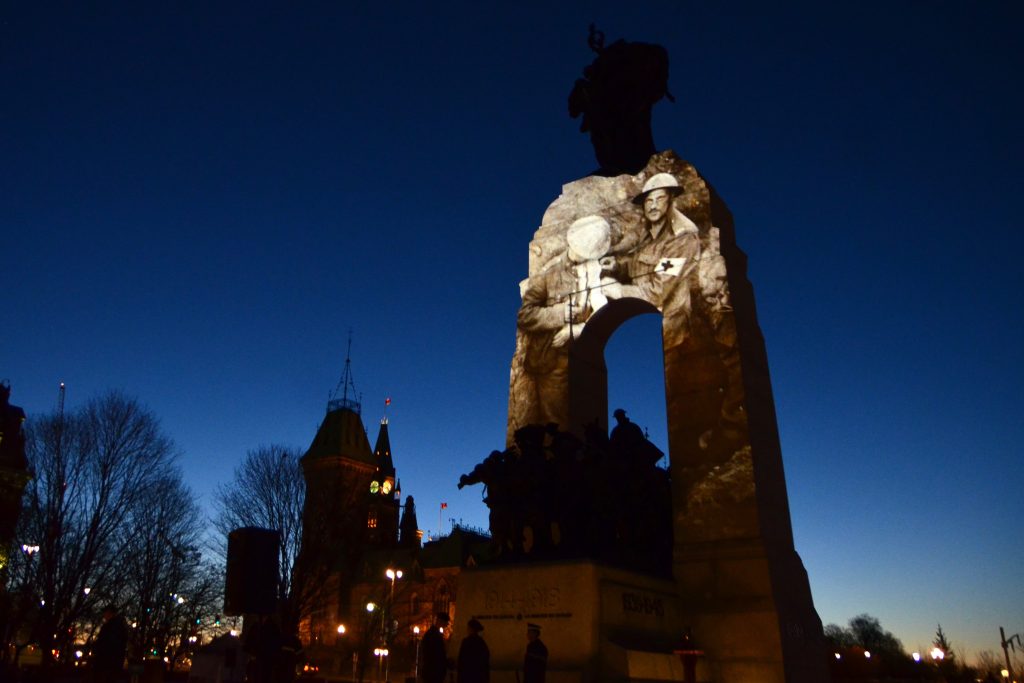Vimy talk draws crowd
By Mamta Manhas
In a dimly lit theatre at the Canadian War Museum, dozens came on March 30 to hear curator and historian Tim Cook answer a timely question: why does Vimy matter?
April 9 marked the 100th anniversary of the start of Canada’s most famous battle from the First World War.
At the time of the battle, Canada was a relatively new nation.
Previous attempts by other Allied forces had failed to reclaim the territory from the Germans, who had occupied the strategic high ground in the French countryside for some time.
In fact, Vimy marked the first time that all four divisions of the Canadian Corps fought side by side.
Canada surprised many by claiming victory after the four-day battle.
Cook’s presentation is part of a series of events the Canadian War Museum is putting together to commemmorate the 100th anniversary of the Battle of Vimy Ridge.
“I think it’s important to figure out why Vimy matters, for whom it matters and at what point in our history has it mattered,” said Cook, whose lecture was also aired on CBC Radio’s Ideas program.
The museum has also unveiled a new exhibition and refurbished First World War gallery to mark the anniversary.
Events were also held at the National War Memorial.
Cook has earned many awards as a historian, popular author and curator at the Canadian War Museum, including the Order of Canada in 2014.
Much of his research for the presentation was drawn from his book latest book, Vimy: The Battle and the Legend.
The battle lasted from April 9-12, 1917, and ended with more than 10,000 causalities.
Some of those who died or were wounded were as young as 16. Museum-goer Sandra Wright said such facts are hard to grapple with.
“These kids are younger than my kids,” she said.
“The mixture of grief and pride is there in all combinations, that’s what you get at Vimy.”
The construction of the Canadian National Vimy Memorial in France — a monument pictured on the back of Canada’s $20 bill — was a complicated affair.
Vimy wasn’t originally considered to be a site for a Canadian monument. It wasn’t until Prime Minister Mackenzie King stepped in that Vimy Ridge was chosen.
Being one of two national historic sites located outside of Canada (the other being the Beaumont-Hamel Newfoundland Memorial) Vimy wasn’t originally considered to be a site for a Canadian monument. It wasn’t until Prime Minister Mackenzie King stepped in that Vimy Ridge was chosen.
The monument was designed by Walter Allward and took more than a decade to complete. Apart from two soaring, colossal pillars, it includes 20 symbolic sculptures and the names of 11,285 Canadian soldiers — men presumed dead, their bodies never recovered — inscribed on its walls.
For Carleton student Kayla Charette, Vimy is an emotional and personal place. “I was there as a student tour guide… It’s just a majestic place where you can feel very Canadian.”
The meaning of Vimy has changed throughout Canadian history, according to Cook. It was forgotten after the Second World War but reborn during the 50th anniversary of the battle in 1967. In recent times, the memory of Vimy Ridge has been rekindled in the context of the war in Afghanistan.
Cook noted that Vimy is not universal embraced as a symbol of Canadian identity: “We are a big and diverse country; not all symbols are accepted by all Canadians”
For many French Canadians, the First World War was seen as an oppressive war. Conscription, which came into effect in 1917 after promises that it would not be implemented, angered many in Quebec, causing riots and a deep divide in Canada.
But Cook acknowledges that Vimy is a resolute symbol. “Vimy matters because it has been embraced by Canadians for generations…Vimy is on our $20 bill, it’s in our passports. There’s strength to the Vimy idea and it has not disappeared. It is our symbol.”
Around 25,000 Canadians were expected to visit Vimy Ridge in northern France to commemorate the 100th anniversary. Along with the memorial, Canadians now have the opportunity to see a new visitor education centre near the site, which opened on April 10.

